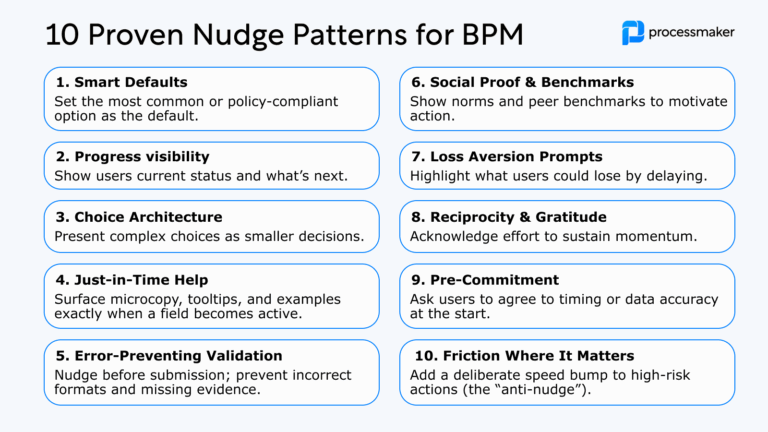In our previous blog post, we discussed how embracing blockchain workflow automation can improve your business processes. By using blockchain in automation and creating an auditable trail of transactions, you can make your workflow more streamlined, efficient, and transparent.
Although the benefits of blockchain for business processes are plentiful, there are still some problems with its implementation. This article examines some of the most common challenges implementing blockchain and how your organization can address them.
What Are Major Blockchain Challenges?
Some of the most frequent blockchain weaknesses and pain points that businesses encounter are:
- Security. Even if you verify and test the algorithm used to write the code behind your blockchain, you can still fall victim to a security breach due to vulnerabilities in the software that you use. For example, in November 2017, users could not access roughly $300 million in the Ethereum cryptocurrency after another user accidentally gained ownership of their digital wallets.
- Expense. One problem hampering greater adoption of technologies like blockchain is the high cost of implementing such a novel technology, especially if the project fails. More expenses also come as additional servers are required to hold the exponentially increasing amount of data added to the blockchain. Since the history of every transaction is stored in the ledger, the amount of data in a blockchain can increase rapidly depending on the frequency and number of transactions.
- Speed. Transactions made using blockchain technology are typically slower than alternatives and may get even slower as you perform more transactions.
- Immutability. Because you cannot delete data preserved in the blockchain, there’s no easy way for you to correct errors.
- Visibility. Other people in the blockchain network can see your transactions and private data, which is both a benefit and a drawback.
When and How to Implement Blockchain
Although the challenges above are potentially serious depending on the way blockchain is applied, using blockchain technology can still provide multiple benefits for businesses. The best way to solve problems with blockchain and benefit from technology is to work within its limitations.
Start small
Blockchain is still a fresh technology, and many of its limitations only become apparent as the scale of your project grows. Developing a minimum viable product to start applying blockchain to your business processes is the best way to build a strong basis for more advanced applications and avoid having to scrap a project down the line. By starting small, you’ll make the transition from previous systems smoother and more manageable to prepare for the challenges to come.
Find the right network size
In a blockchain network, a consensus among the majority of participants in the network is required to verify that data added to the blockchain is valid. Sometimes the consensus required to verify data is 50/50 but can differ depending on the blockchain’s code. The number of participants in your blockchain network should be large enough to prevent a few users from changing the consensus to allow fraudulent data to enter the blockchain.
Another potential issue with blockchain networks is that the identity of each participant and the transactions they perform are transparent. Companies in private networks may not want this level of transparency so as to keep certain information confidential, such as the identities of their suppliers or the amount transferred in each transaction. Therefore, your blockchain network should also be small enough to limit the participants in the network and ensure that confidential information does not get into the wrong hands.
Know when to use it
Blockchain isn’t necessary for a private network in which you know and trust all of the participants, such as those within the same company. It’s also not a good fit if you’ll be performing small transactions at frequent intervals because of blockchain’s slowness and data storage costs caused by the exponentially growing amount of data added to the blockchain with each transaction. To get the most out of blockchain technology, you should use it for networks in which the trustworthiness of the participants is unknown, and for large and infrequent transactions where security is more of a concern.
How to Leverage BPM Software to Overcome Blockchain Limitations
Together, business process management (BPM) software and blockchain technology can help integrate and automate your workflow. By complementing blockchain technology with existing tools in your BPM software, you’ll enable even nontechnical users to experience the benefits of blockchain. Accessing blockchain technology through an easy-to-use interface provided by BPM software helps unlock the benefits of blockchains without a steep learning curve while curtailing the risk involved with implementing new technology.
Secure, Traceable Ledger
You can use BPM software and blockchain technology in combination to provide a secure and traceable ledger for transactions, contracts, and documents. To prepare for an audit you can store logs and workflow data about your business processes within the blockchain. Since data stored in a blockchain is verifiable by all other members of the blockchain network, the information you provide in an audit is inherently more trustworthy and easy to validate. Restrict the users who have access to data in the blockchain ledger by granting or removing permissions through BPM software to protect the integrity of company documents. This will increase security and improve auditors’ confidence in your digital “paper trail.”
Script Integrity
Blockchain technology preserves the integrity of a script running in the cloud as part of a business process. For example, as part of a process, suppose you need to repeatedly call a script that calculates fees or taxes thousands of times. Even if you use blockchain to record the inputs and outputs of the script as part of the audit trail, you still need to ensure that the script itself has not been tampered with. It’s possible to use the blockchain to capture not only the results of your processes but also the code and logic that compose these processes.
Minimize System Crashes
Finally, BPM software can add supplementary conditions and layers to your processes to avoid system crashes or shutdowns when transactions exceed the delimited boundaries. For instance, if the software determines that you’re performing too many transactions within a given time frame, it can force the blockchain to wait before completing another transaction. Instances of BPM software deployed on the cloud automatically scale with the number of transactions performed on the blockchain, which can also prevent problems related to an influx of transactions. Cloud deployments of BPM software can also save your company the headache and cost of keeping up with data storage demands as the blockchain grows.
To learn more about how to leverage BPM software to automate your business processes, please visit our blog.





